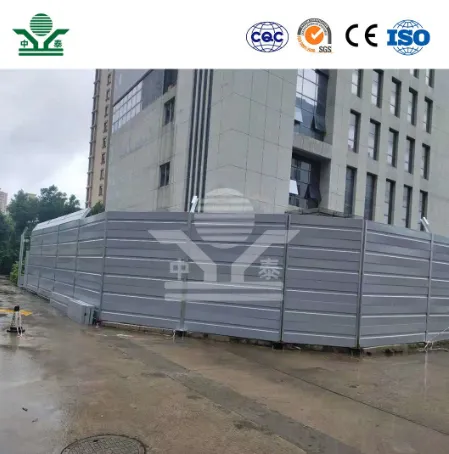The Rise of Perforated Corrugated Aluminum Panels in Modern Architecture
In recent years, architectural design has shifted towards innovative materials that not only enhance aesthetic appeal but also provide functionality and sustainability. One such material that has gained significant traction is perforated corrugated aluminum panels. These panels are increasingly being utilized in both commercial and residential projects, revolutionizing the way buildings interact with their environment.
Understanding Perforated Corrugated Aluminum Panels
Perforated corrugated aluminum panels are sheets of aluminum that have been shaped into a wavy pattern and feature a series of strategically placed holes. The corrugation adds structural strength, while the perforations allow for light and air to pass through, creating a dynamic interaction between the interior space and the outside world. This blend of form and function makes them an ideal choice for a variety of architectural applications.
Benefits of Using Perforated Corrugated Aluminum Panels
One of the primary advantages of these panels is their lightweight nature. Compared to traditional building materials, aluminum panels are much lighter while still providing considerable strength. This makes them easier and more cost-effective to transport and install, reducing overall construction costs.
Another significant benefit is their versatility. The panels can be customized in terms of size, shape, and perforation patterns, allowing architects and designers to achieve unique designs that cater to specific project requirements. These panels can be used for facade cladding, sun shading, privacy screens, and even decorative elements, making them exceedingly adaptable.
In terms of sustainability, aluminum is a recyclable material, which aligns with growing environmental concerns in the construction industry. By integrating perforated corrugated aluminum panels, architects can design buildings that minimize their ecological footprint. The panels can also contribute to energy efficiency; the perforations allow for natural ventilation, reducing the reliance on air conditioning systems and lowering energy costs.
perforated corrugated aluminum panels

Aesthetic Appeal
Architecturally, perforated corrugated aluminum panels offer a modern and sleek appearance that aligns well with contemporary design principles. The interplay of light and shadow created by the perforations can significantly enhance the visual interest of a building facade. The choice of finishes, such as anodizing or powder coating, allows for a wide range of colors and textures, further enabling designers to tailor the aesthetic to the building's context.
Moreover, these panels can be utilized to convey a sense of movement and dynamism. When used on larger scales, they can create a dramatic effect that captivates viewers, turning the building itself into a piece of art. Various patterns can also evoke different feelings; for instance, more intricate designs can suggest elegance and sophistication, while simpler patterns might convey a minimalist approach.
Case Studies
Numerous architectural projects successfully incorporate perforated corrugated aluminum panels. For example, the Foster Tower in Hong Kong features these panels as a prominent design element, creating a striking facade that responds to the city’s bustling urban landscape while allowing for natural light to permeate the interior spaces. Similarly, the The Hive in Singapore utilizes such panels to achieve a balance between privacy and openness, showcasing the versatility and transformative potential of this material.
Conclusion
Perforated corrugated aluminum panels represent a convergence of aesthetic beauty, functional performance, and environmental responsibility. As architectural demands continue to evolve, these innovative panels offer a unique solution that meets the needs of modern design while pushing the boundaries of traditional building materials. Whether in commercial or residential projects, the benefits and versatility of perforated corrugated aluminum panels ensure their place in the future of architecture, paving the way for more sustainable and visually appealing built environments. As architects and designers continue to explore new possibilities, one thing is clear the perforated corrugated aluminum panel is more than just a trend; it is a staple in the evolving narrative of modern design.
-
Why Galvanized Trench Cover Steel Grating Resists Corrosion
NewsJul.10,2025
-
The Versatility and Strength of Stainless Expanded Metal Mesh
NewsJul.10,2025
-
Load Calculations in Steel Grating Platforms
NewsJul.10,2025
-
Keeping Pets and Kids Safe with Chicken Wire Deck Railing
NewsJul.10,2025
-
Hole Diameter and Pitch for Round Perforated Metal Sheets
NewsJul.10,2025
-
Aluminium Diamond Mesh in Modern Architecture
NewsJul.10,2025
Subscribe now!
Stay up to date with the latest on Fry Steeland industry news.

